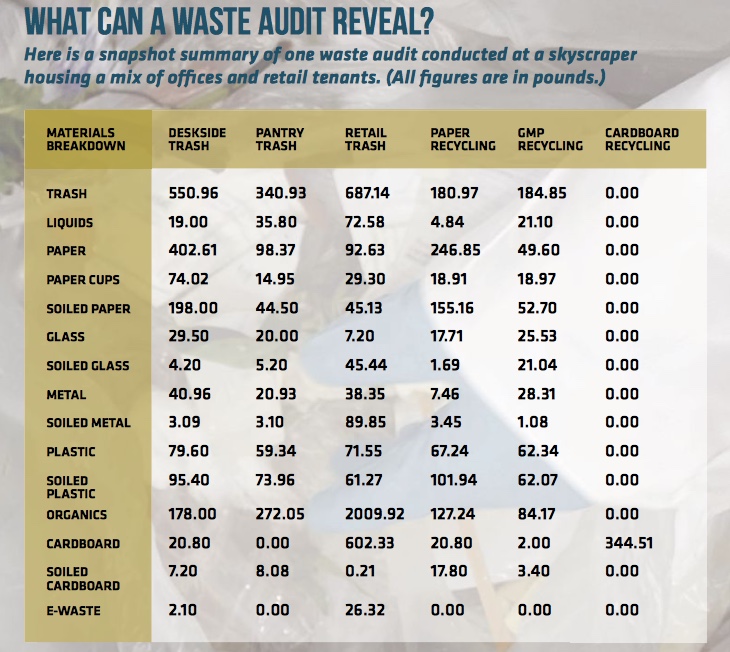
“Every business that is reopening should conduct a waste audit to determine how their waste has changed, not only in the type of materials being collected, but also how they are being discarded. Workers have been away for some time and may have forgotten how a building’s waste diversion program works.”
Facility Management Journal (FMJ) magazine recently worked with Great Forest to take a timely, in-depth look at the importance of waste audits to help determine changing waste content, and what to do.
With businesses reopened or in various stages of reopening across the country, facility managers must prepare to handle all the new types of waste that come with thousands of workers (and the public) flooding back into buildings and businesses. While waste generation is a constant, post-COVID lockdown waste may differ due to changing habits, restrictions, or adjustments in the way business is conducted.
The most obvious new addition to the waste stream is PPE. If evidence of discarded PPE on streets and in oceans is anything to go by, businesses must provide special containers or trash bags that can be sealed to safely collect discarded PPE so that it does not become a health hazard. (Learn more about safe PPE disposal.)
Aside from PPE, businesses may also see an increase in the number of single-use items brought in by workers and the public, from food containers to sanitary wipes. Alternating work schedules may also affect the amount of waste generated at a building post-lockdown.
Going forward, this means that businesses and buildings must reassess their waste content to manage it effectively. And the best way to do that is through waste audits.
A waste audit will reveal how a businesses’ waste has changed, and provide data needed to make any necessary adjustments to reduce waste and control costs, sustainably and safely.
Waste Audits: Getting To The Bottom Of Waste
The FMJ report, “Getting To The Bottom of Waste,” draws on case studies and data pulled from hundreds of waste audit investigations conducted around the world by Great Forest every year.
The report offers a rare look at hard data (see below) collected during a Great Forest waste audit conducted at a skyscraper in NYC with a mix of offices and retail tenants. It shows:
- What kind of data is collected by a waste audit,
- How to analyze and interpret the data,
- How recommendations are drawn from reading the data
“Every business that is reopening should conduct a waste audit to determine how their waste has changed, not only in the type of materials being collected, but also how they are being discarded. Workers have been away for some time and may have forgotten how a building’s waste diversion program works,” says Great Forest President Richard Fuller.
“In a sense you are starting fresh. You must know what’s in your waste to address it efficiently. The data you gather in a waste audit is key to showing you how to improve your waste program, not only to ensure safety, but to also protect yourself in the face of rising waste costs.”
Find out what this data below means, and see more Great Forest analysis and case studies in the FMJ report, Getting To The Bottom of Waste.

